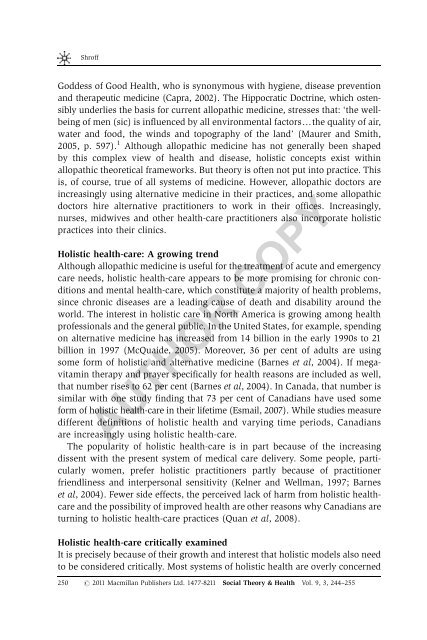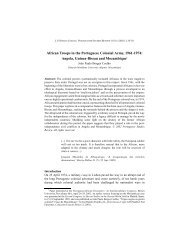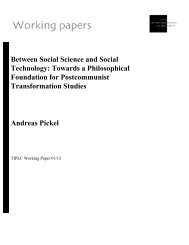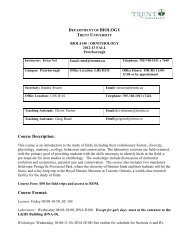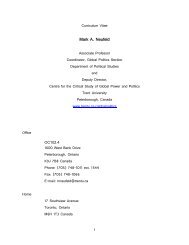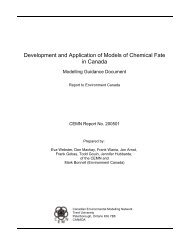AUTHOR COPY - Trent University
AUTHOR COPY - Trent University
AUTHOR COPY - Trent University
Create successful ePaper yourself
Turn your PDF publications into a flip-book with our unique Google optimized e-Paper software.
Shroff<br />
Goddess of Good Health, who is synonymous with hygiene, disease prevention<br />
and therapeutic medicine (Capra, 2002). The Hippocratic Doctrine, which ostensibly<br />
underlies the basis for current allopathic medicine, stresses that: ‘the wellbeing<br />
of men (sic) is influenced by all environmental factorsythe quality of air,<br />
water and food, the winds and topography of the land’ (Maurer and Smith,<br />
2005, p. 597). 1 Although allopathic medicine has not generally been shaped<br />
by this complex view of health and disease, holistic concepts exist within<br />
allopathic theoretical frameworks. But theory is often not put into practice. This<br />
is, of course, true of all systems of medicine. However, allopathic doctors are<br />
increasingly using alternative medicine in their practices, and some allopathic<br />
doctors hire alternative practitioners to work in their offices. Increasingly,<br />
nurses, midwives and other health-care practitioners also incorporate holistic<br />
practices into their clinics.<br />
Holistic health-care: A growing trend<br />
Although allopathic medicine is useful for the treatment of acute and emergency<br />
care needs, holistic health-care appears to be more promising for chronic conditions<br />
and mental health-care, which constitute a majority of health problems,<br />
since chronic diseases are a leading cause of death and disability around the<br />
world. The interest in holistic care in North America is growing among health<br />
professionals and the general public. In the United States, for example, spending<br />
on alternative medicine has increased from 14 billion in the early 1990s to 21<br />
billion in 1997 (McQuaide, 2005). Moreover, 36 per cent of adults are using<br />
some form of holistic and alternative medicine (Barnes et al, 2004). If megavitamin<br />
therapy and prayer specifically for health reasons are included as well,<br />
that number rises to 62 per cent (Barnes et al, 2004). In Canada, that number is<br />
similar with one study finding that 73 per cent of Canadians have used some<br />
form of holistic health-care in their lifetime (Esmail, 2007). While studies measure<br />
different definitions of holistic health and varying time periods, Canadians<br />
are increasingly using holistic health-care.<br />
The popularity of holistic health-care is in part because of the increasing<br />
dissent with the present system of medical care delivery. Some people, particularly<br />
women, prefer holistic practitioners partly because of practitioner<br />
friendliness and interpersonal sensitivity (Kelner and Wellman, 1997; Barnes<br />
et al, 2004). Fewer side effects, the perceived lack of harm from holistic healthcare<br />
and the possibility of improved health are other reasons why Canadians are<br />
turning to holistic health-care practices (Quan et al, 2008).<br />
<strong>AUTHOR</strong> <strong>COPY</strong><br />
Holistic health-care critically examined<br />
It is precisely because of their growth and interest that holistic models also need<br />
to be considered critically. Most systems of holistic health are overly concerned<br />
250 r 2011 Macmillan Publishers Ltd. 1477-8211 Social Theory & Health Vol. 9, 3, 244–255


